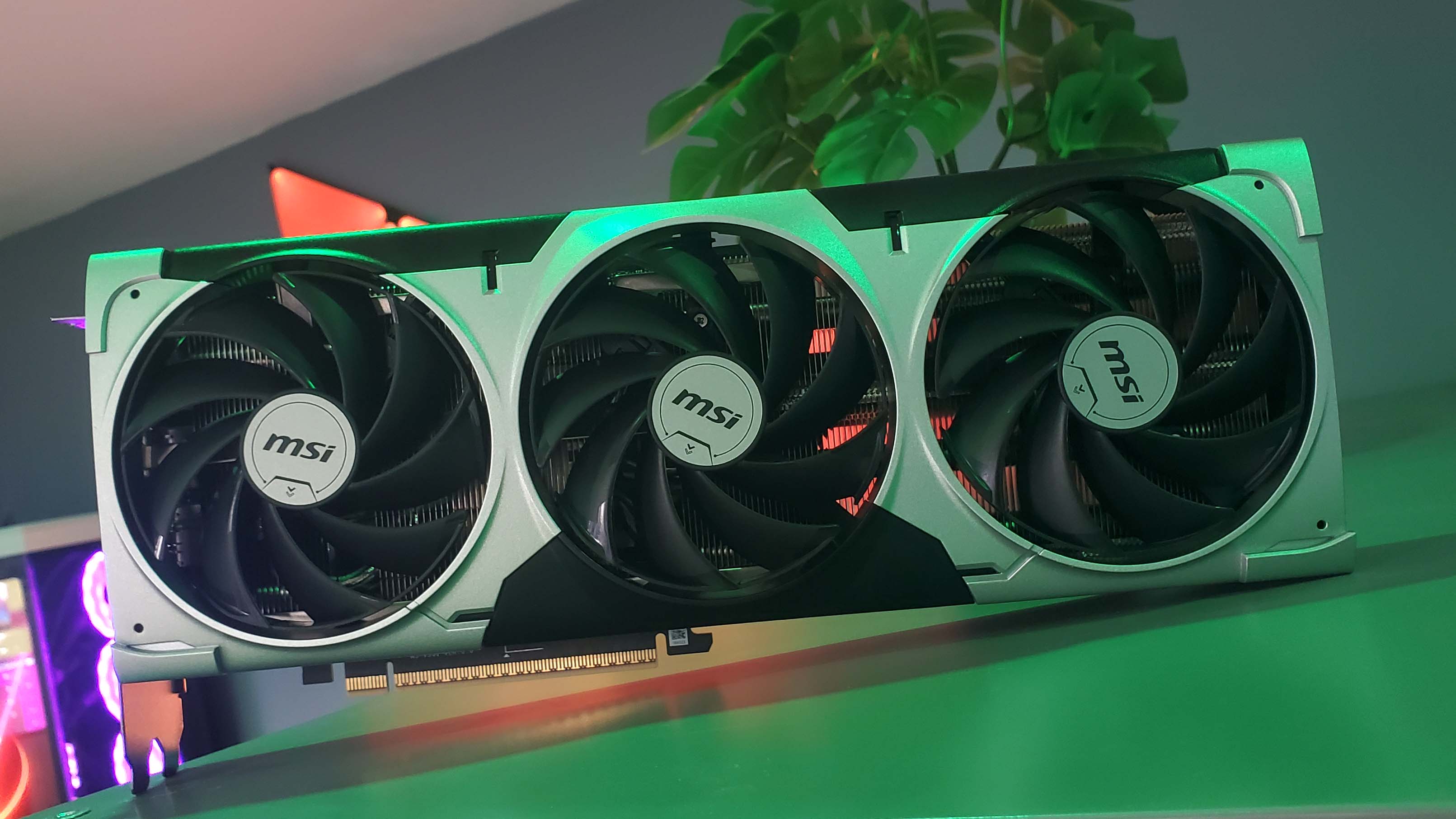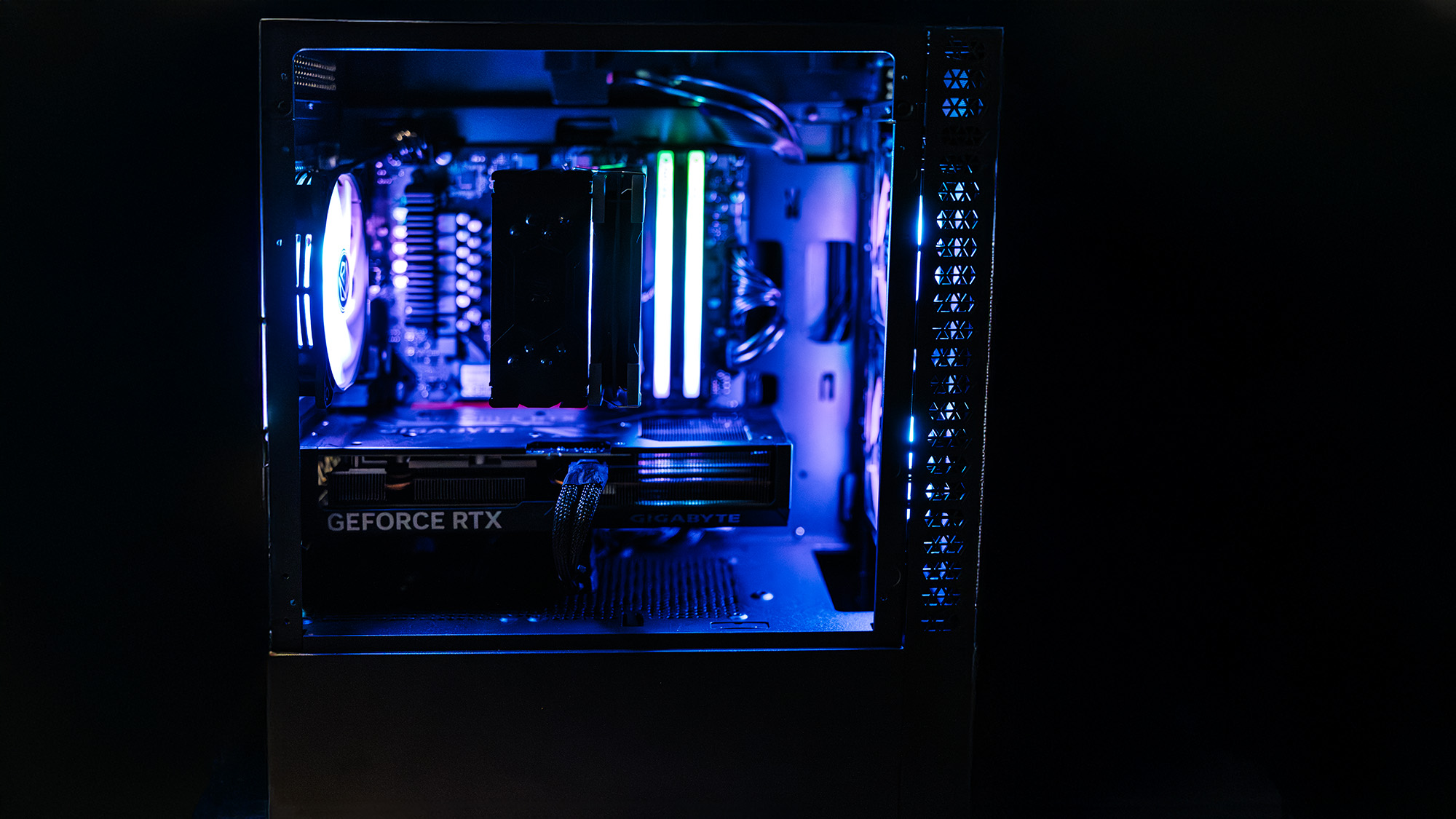Our Verdict
MSI's nominally MSRP RTX 5070 Ti Ventus 3X is a great example of Nvidia's new card. At its $750 price tag it would be the high-end RTX Blackwell I would recommend to gamers looking for a really tangible upgrade. With its overclocking performance it can nip at the toes of the more expensive RTX 5080, and comes with the impressive Multi Frame Gen feature which can push its gaming performance past everything from the last generation. I just have the fear over whether we'll see that MSRP in retail.
For
- Multi Frame Generation still slaps
- Overclocks like a beast
- Close to RTX 5080 performance
- Theoretically cheaper than RTX 4070 Ti/Super
Against
- In reality the 5070 Ti is likely to cost the same as the RTX 5080 MSRP
- You can knock 20% off the score if this one ends up a $900+ GPU
PC Gamer's got your back
If it wasn't a $1,000+ graphics card, I'd feel sorry for the RTX 5080. It's literally half the GPU of the big boi RTX 5090—Nvidia's flagship GeForce Blackwell card—and yet suffers from severely limited stock and punitively high pricing. But it's the second-tier RTX 50-series card, and can at least claim to be the second fastest gaming GPU around, and that's got to count for something, right?
And yet here comes the RTX 5070 Ti—its supposedly cheaper, younger sibling—kicking its shins and stealing its lunch. As a consumer, I'm absolutely here for this: a new GPU punching above its weight class. But it is a little strange considering Nvidia has previously been so tight on segmenting its cards purely on performance. I've also got a feeling there's something uncomfortably funky happening with the pricing post-launch, which is sure to tarnish the RTX 5070 Ti.
Still, on the one hand, kudos to Nvidia for following up the stupidly named RTX 4070 Ti Super with a relatively specced RTX Blackwell version, and giving it a nominal $50 price cut into the bargain. But on the other hand I'm struggling to see why the RTX 5080 was hoofed out the door alongside the RTX 5090 and then followed up with a card that's not far off it on paper, and then shreds that performance delta with a huge amount of overclocking headroom.
Yeah, the RTX 5070 Ti is that card. The overclocking hero that can almost match the gaming performance of the GPU above it in the stack if you're willing to dig into the headroom Nvidia has somehow left you to play with. And the best bit is it's not even that hard to do; you don't have to be some OC genius to hit 3.2 GHz+ with this GPU.
Nvidia RTX 5070 Ti: The verdict
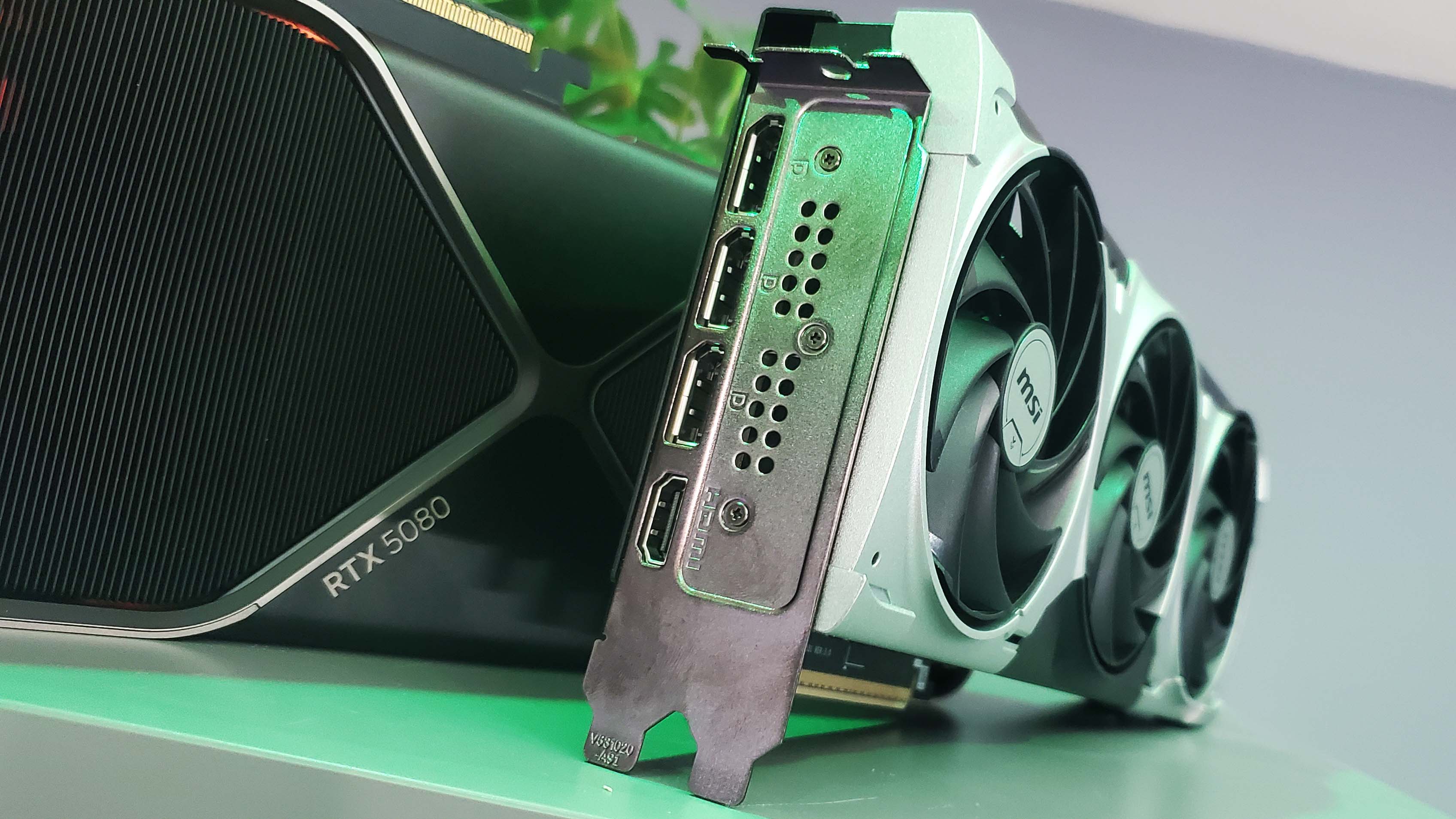
✅ You can find it at MSRP: This is going to be the standing advice for any RTX 50-series purchase for the foreseeable. While stock levels remain expectedly tight retailers and scalpers are going to be in full effect trying to make you pay closer to $1,000 for this card.
✅ You're comfortable overclocking: There is a ton of OC headroom within the GB203 GPU at the heart of this card. If you're happy to spend a little time getting a stable overclock
❌ Stock remains scarce: Until stock levels normalise I expect it's going to be mighty hard to find an MSRP card such as this MSI version while retailers sniff an opportunity to price gouge.
If you missed out on that RTX 5080 you originally had your heart set on because of the scarcity of stock come launch day, then you might have just had a bit of a lucky escape. The new RTX 5070 Ti might house a cut-down version of the same GPU, but it's not too far behind on raw frame rate performance at all.
The MSRP card I've been testing for launch day is the MSI RTX 5070 Ti Ventus 3X. Despite that, it is an overclocked card, though I have been assured it is going to hit that price point in the UK at least. For how long that will last, or how many will actually be available, however, I have no such good news to share.
And I have very distinct worries about what this exact card is really going to cost in the real world.
Still, let us assume this is the base rate of an RTX 5070 Ti, because I'm a trusting sort and that pleases me. The original Nvidia whitepaper suggests the standard Boost clock of the card would be 2.45 GHz but, though those figures are always kinda worst case scenarios, I wasn't expecting this card to rock up with a 2.7 GHz average Boost out of the box.
And yet here we are, with a GPU capable of high clock speeds, impressively low thermals, and being just short of the RTX 5080's gaming performance by 14% at 1440p and 17% at 4K. When you sit back and consider what that actually translates to in terms of frame rates, you'll see a card that's rarely more than 10 fps off the pace.
Already, that sounds like bad news for the RTX 5080, but it gets worse when you start pushing those Boost clocks even higher. From overclocking the RTX 5080 I knew the GB203 chip had a good deal of headroom available, and so it has proved with the RTX 5070 Ti's cut down version of that GPU, too.
With just a little cavalier clock tweaking I'm within 10% of the RTX 5080 at all resolutions.
There is something disgracefully smelly going on with the RTX 5070 Ti pricing.
As well as being around 25 - 30% quicker than the old RTX 4070 Ti Super, it's knocking on the door of the RTX Blackwell card above it, too. If you'd like an older reference point, this is a GPU that hoses the RTX 3090, in gaming and productivity terms. Sure, at some point the extra 8 GB in the old $1,500 card will come into play, but only in very VRAM limited circumstances.
I don't know why the headroom has been left in there and not already exploited out of the box, but the overclocking performance still makes me far more impressed with this still rather pricey GPU. Of all the high-end new Nvidia graphics cards—and at $749 it is still very much that, even just in terms of base pricing alone—this is the one that I would recommend.
But sadly, I do have to finish my verdict with a pretty major caveat. In the build up to launch it's become clear there is something disgracefully smelly going on with the RTX 5070 Ti pricing. The nominal $749 MSRP looks like it might only be paid passing lip service by retailers, with a host of listings already close to the $1,000 mark.
We're not immune in the UK, either, with one retailer telling me that it would be stocking the new cards starting at £875 as the lowest price, and other overclocked cards having their own MSRP of £940.
At these sorts of prices the shine has well and truly been scorched from the RTX 5070 Ti. If that's where we land at for a standard retail price—whether for weeks, months, or years—it will be a huge shame. At its Nvidia MSRP it's already a lot of money, but the default performance, the Multi Frame Gen feature, and the overclocking headroom all make it a decent value GPU.
But if manufacturers and retailers are going to turn scalper and charge a ludicrous price premium on top then the RTX 5070 Ti is sure to have a rocky start to life.
Nvidia RTX 5070 Ti: The specs
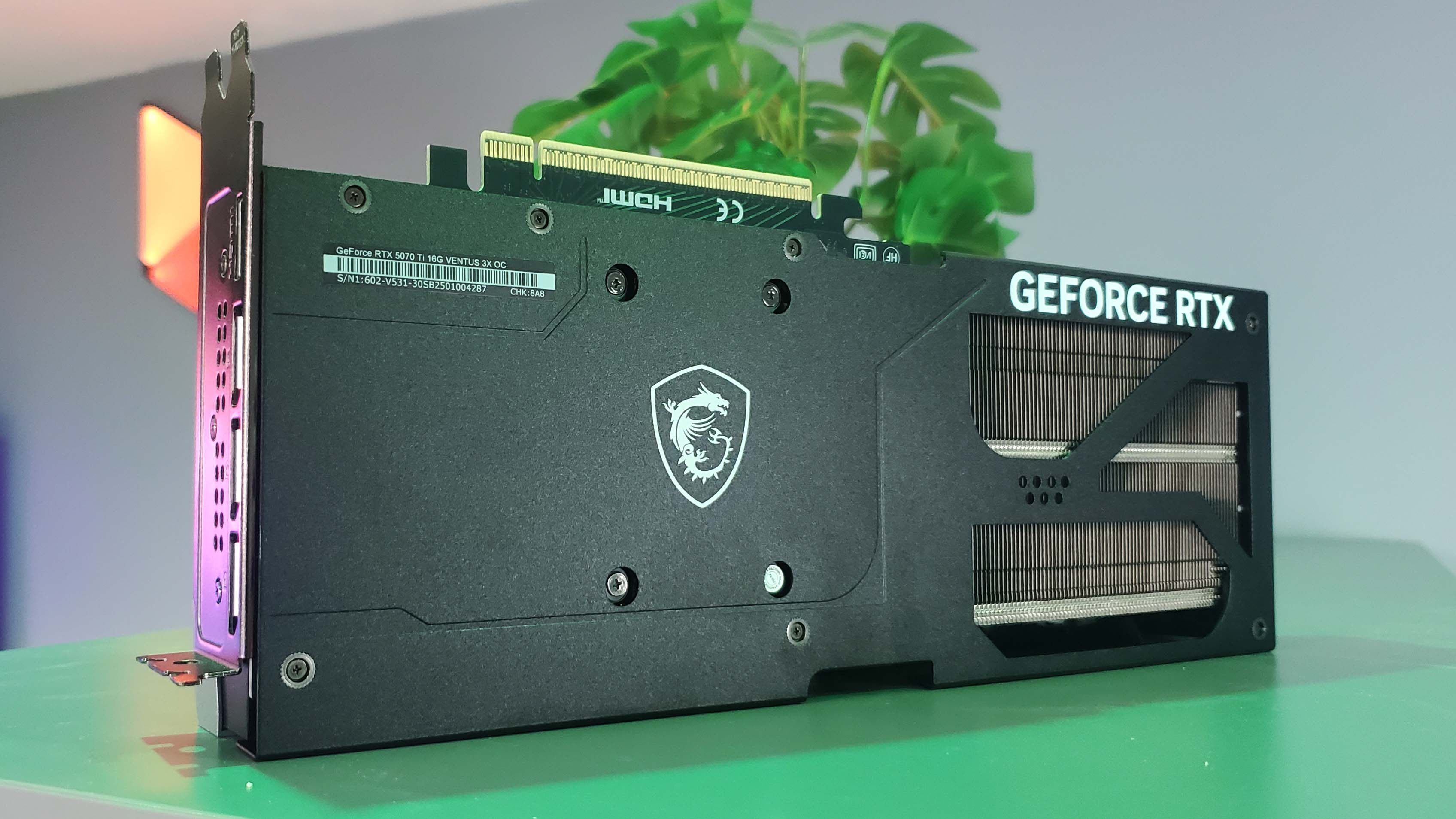
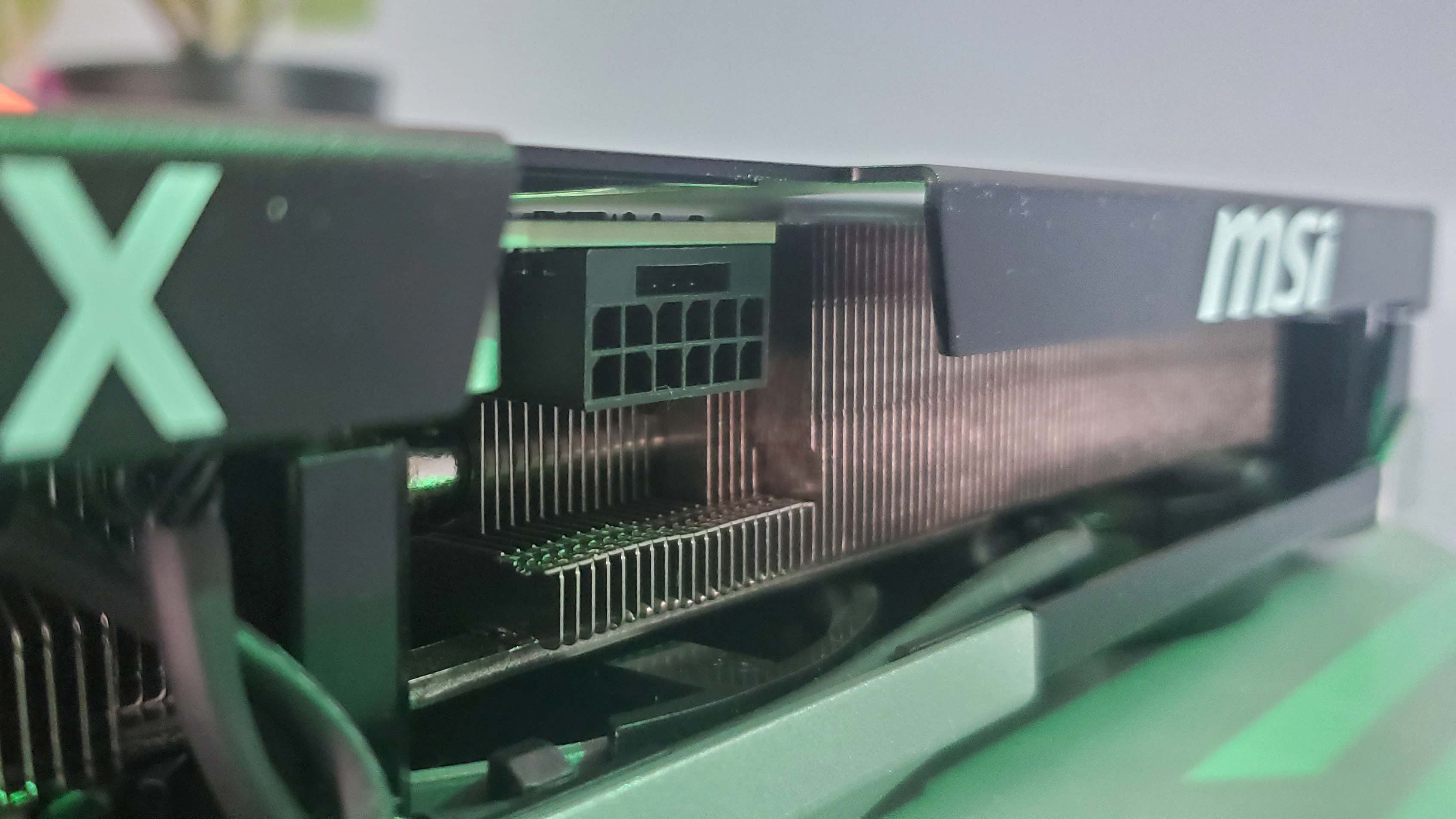
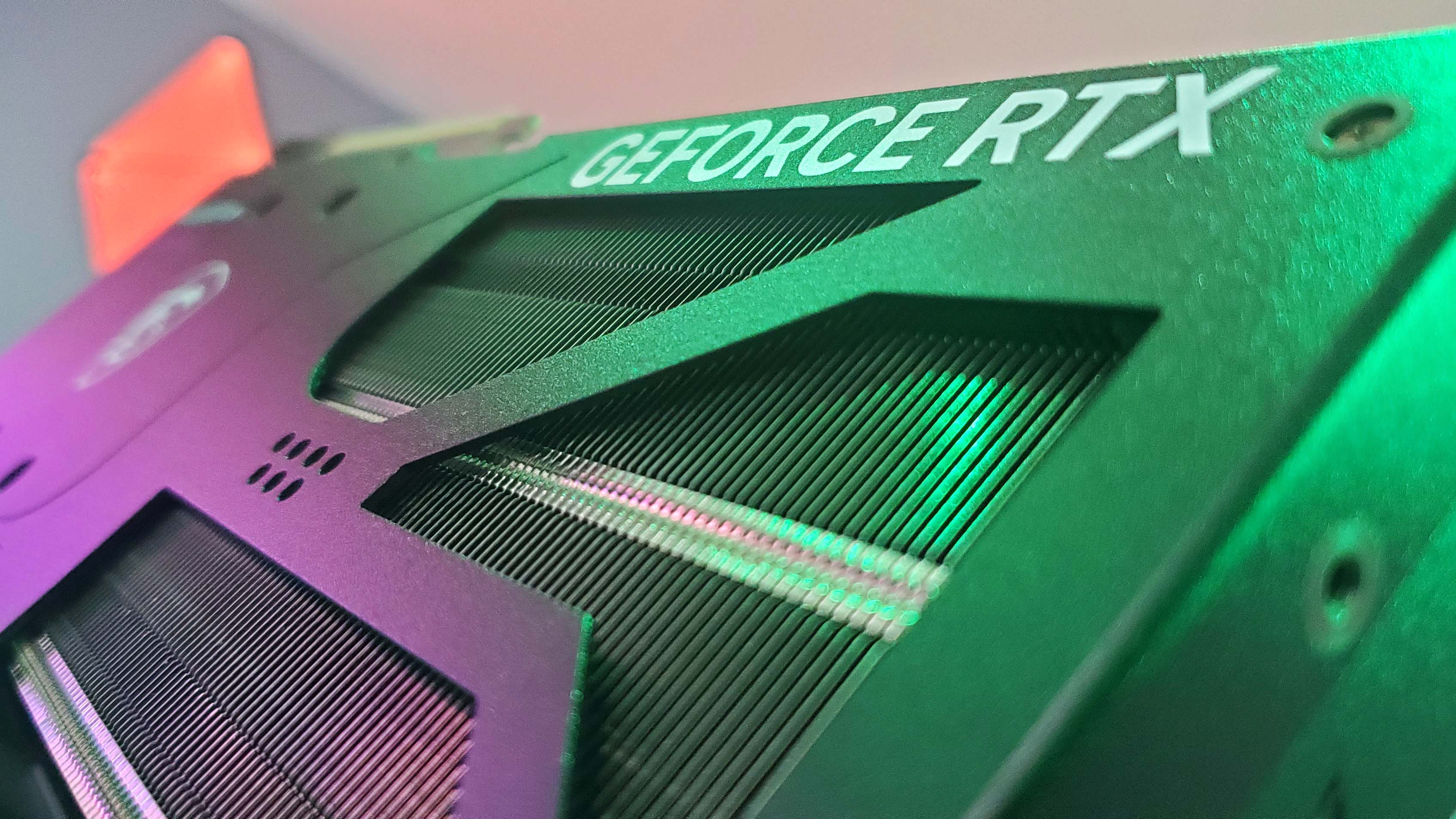
The RTX 5070 Ti is a direct step on from the RTX 4070 Ti Super rather than the original RTX 4070 Ti, which is 100% a good thing. That means, rather than using a lower spec GPU from the start, Nvidia has opted to instead carry on using just a cut-down version of the same chip it's used for the RTX 5080.
That has a couple of key benefits, both for us and the green team. For a start it means we get a decent memory sub-system, with an aggregated 256-bit bus rather than the 192-bit bus we're set to get with the GB205 GPU going into the RTX 5070. Combined with the same 16 GB of GDDR7—albeit with a slightly lower clock speed and a little less L2 cache—we've got a very similar setup to the RTX 5080 right away.
This was how the RTX 4070 Ti Super (oh, how I still hate that doubling up of suffixes…) was built, and I am very pleased Nvidia has stuck to that. But as I say, it benefits the company, as it allows for failed GB203 chips, that could not have been used for RTX 5080 cards, to be repurposed for something else.
| Header Cell - Column 0 | RTX 5070 Ti | RTX 5080 | RTX 4070 Ti Super |
|---|---|---|---|
GPU | GB203 | GB203 | AD103 |
CUDA cores | 8960 | 10752 | 8448 |
Boost clock (GHz) | 2.45 | 2.62 | 2.61 |
Base clock (GHz) | 2.30 | 2.3 | 2.34 |
Tensor core TOPS (FP16) | 176 | 225 | 176 |
Ray tracing core TFLOPS | 133 | 171 | 102 |
Memory | 16 GB GDDR7 | 16 GB GDDR7 | 16 GB GDDR6X |
Memory bus width | 256-bit | 256-bit | 256-bit |
Memory bandwidth (GB/s) | 896 | 960 | 672 |
Total Graphics Power (watts) | 300 | 360 | 285 |
Required system power (PSU wattage) | 750 | 850 | 700 |
Power connector | 1x 300 W PCIe Gen 5 OR 2x PCIe 8-pin adapter | 1x 450 W PCIe Gen 5 OR 3x PCIe 8-pin adapter | 1x 450 W PCIe Gen 5 OR 3x PCIe 8-pin adapter |
MSRP | $749 | $999 | $799 |
Now, the TSMC 4N process is the same as the Ada generation, and as such ought to be pretty robust by now, and it's actually a slightly smaller GPU compared with the AD103 of the RTX 4080 and RTX 4070 Ti Super, so yields should be good. Presumably that's why Nvidia was happy to use a full GB203 die for the RTX 5080s. But that doesn't leave it any wiggle room for chips that don't have a fully functional complement of 10752 CUDA cores.
Having the RTX 5070 Ti, with its 8960 cores, allows Nvidia to drop those chips that miss the full mark into a still very effective graphics card.
The overall power levels are very similar to the previous generations of RTX xx70 Ti series cards, with the RTX 3070 Ti coming in with a 290 W TGP, the RTX 4070 Ti/Super cards sporting a 285 W TGP, and this new RTX 5070 Ti riding a 300 W TGP.
There is no Founders Edition of the RTX 5070 Ti, so there's nothing to be said for Nvidia's funky designs in this round of cards, but it gives the AIBs somewhere to go with their own designs. This MSI RTX 5070 Ti Ventus 3X is largely similar to the RTX 4070 Ti Super Ventus 3X we have, with some slight variations in the design. It's a little less angular, which is to its credit, but still retains the same grey and black aesthetic and comes in a slightly more than dual-slot config.
Nvidia RTX 5070 Ti: The performance
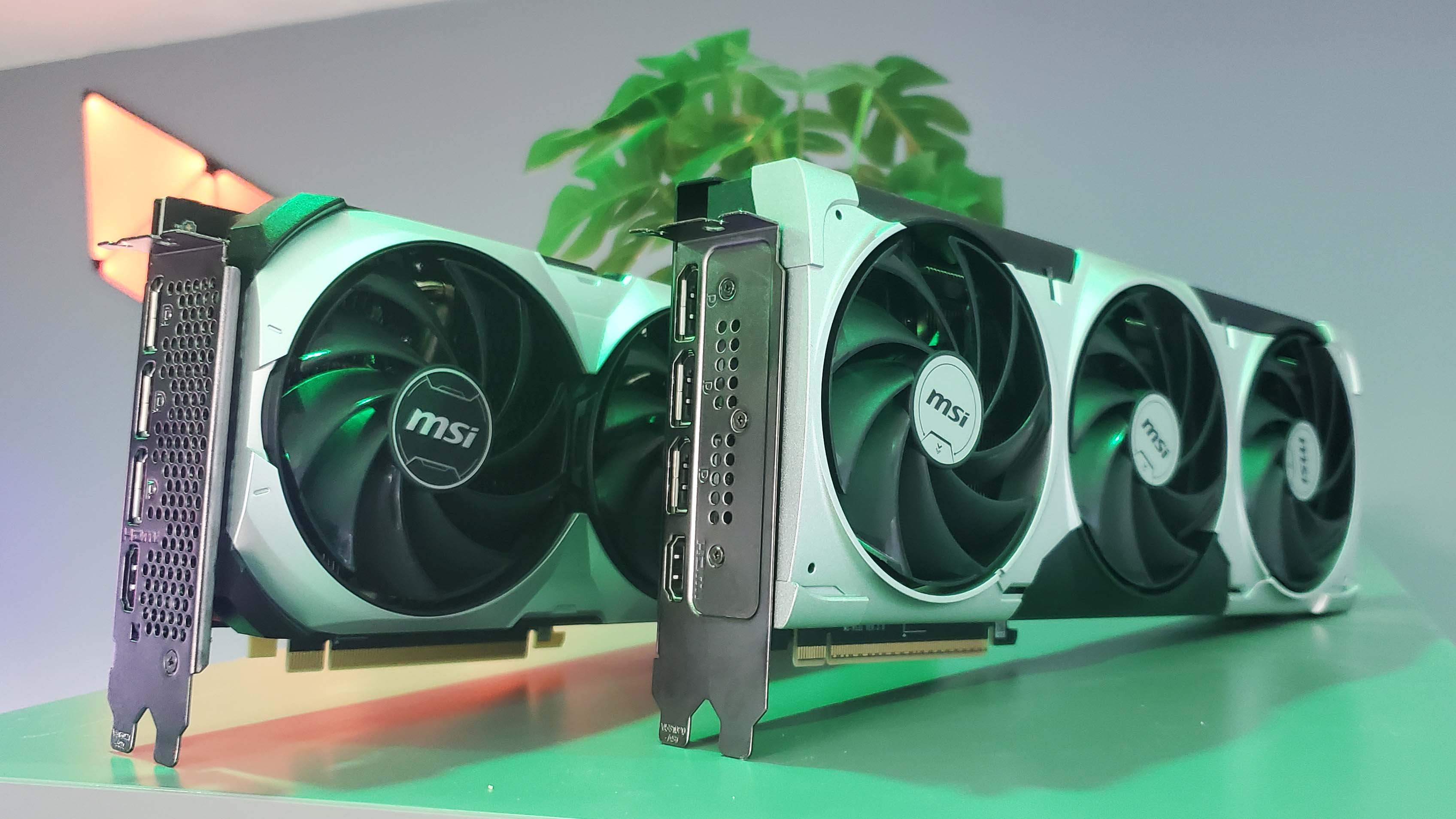
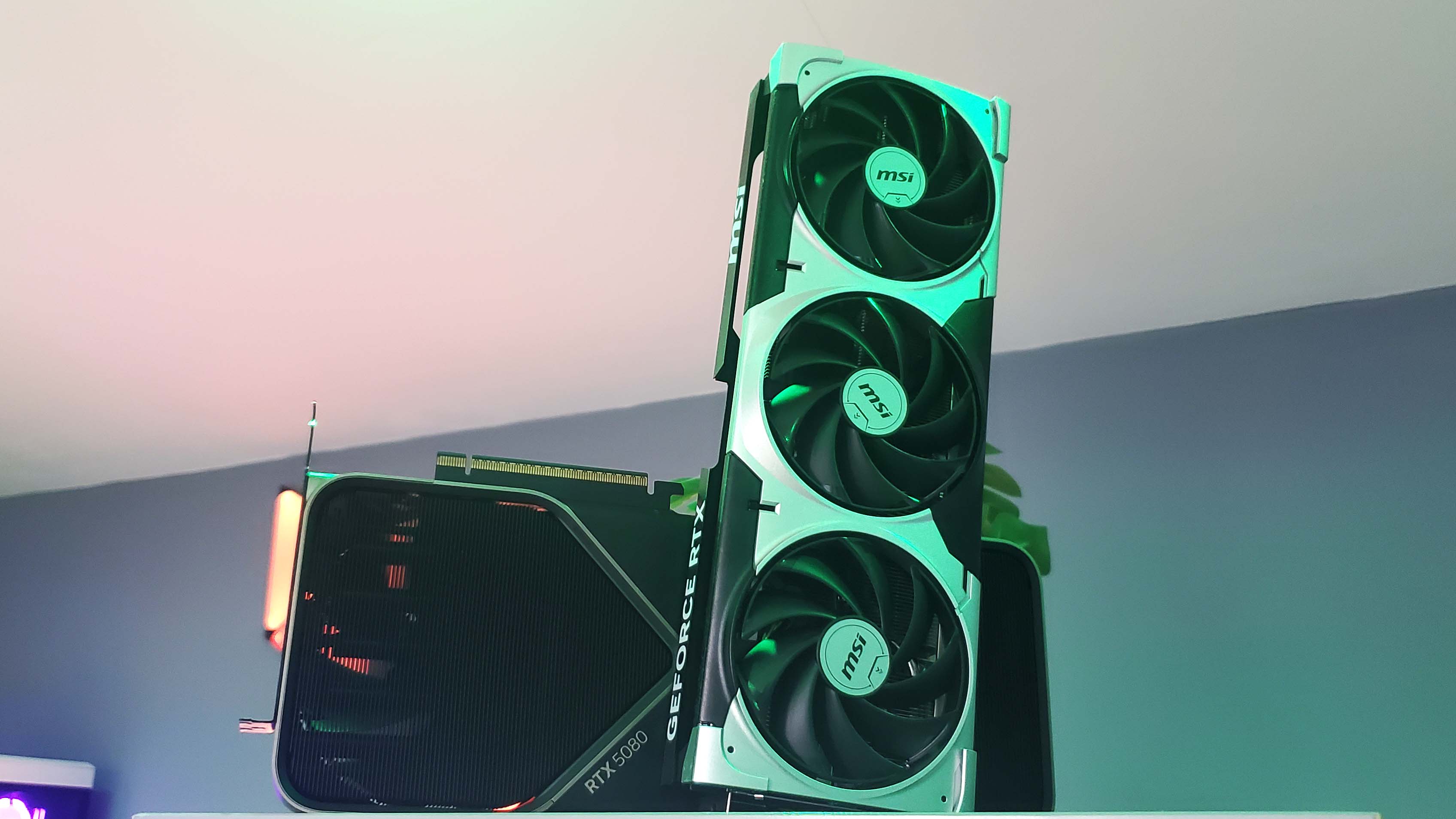
The base performance of the RTX 5070 Ti is roughly in line with what Nvidia said it would be when we were first taken through the new RTX Blackwell generation of cards back at the CES Editor's Day. There we were told to expect around a 20% gen-on-gen increase over the RTX 4070 Ti Super, and that's roughly where we are.
There is one outlier in our testing suite, which is the Metro Exodus Enhanced Edition. That's only giving us an 11% performance bump, and is dragging down the overall average, but the rest of our test suite is showing the same 20% increase.
That does then put it almost directly in the middle of the RTX 4070 Ti Super and the RTX 5080, being some 15-20% slower than the second-tier RTX Blackwell GPU. When it's nominally 25% cheaper—MSRP to MSRP—then that's not a bad return.
Nvidia wants us to think about the performance in the face of the RTX 30-series, given that upgrading every generation is pretty rare. But though you're looking at something like a 50% performance bump over the RTX 3070 Ti, that was effectively another tier below this card in terms of its $599 pricing. Still, the fact that you can get the RTX 5070 Ti to run at around 25-30% faster than the RTX 3090—the $1,500 flagship of the Ampere generation—it's obvious there is a healthy increase in gaming frame rates leap-frogging a GPU gen.
Then you also have the added benefits of Multi Frame Generation in the games that support it, which are most games that currently support regular 2x Frame Generation. I'm still mightily impressed with MFG as a feature—and it truly makes this an excellent 4K gaming card in those games. I will say, that in something as taxing as Alan Wake 2, where the input frame rate and PC latency aren't great, that things start to break down at the full 4x MFG setting. Dial that back to 3x and you're still getting a great level of performance, but with fewer of the visual artifacts that seem to creep in.
That said, with Cyberpunk 2077 on RT Overdrive at 4K, I'm only getting 15 fps as standard, and a brutal 181 ms of PCL. Throw DLSS Quality into the mix and at 4X MFG you'll hit 110 fps, with just 77 ms of latency. In a single player game, that really doesn't feel like much at all.
And that level of performance only improves when you start talking about overclocking. In modern GPU history, that hasn't been something I've paid much attention to in a review because of the fact that chips have been tuned to make the best use of the headroom available to them out of the box, so there has been precious little left for us nerdy tweakers. Not so with the RTX Blackwell generation, and specifically the GB203 GPU.
I've just booted up MSI Afterburner and recklessly pushed the GPU and memory frequencies up.
After taking the RTX 5080 for a spin, I was excited to get my hands on the RTX 5070 Ti, and even though this Ventus 3X doesn't have some sort of extreme triple-slot cooling array atop it I've still managed to get a ton of extra performance out of the GPU. Despite an initial bug that stopped me from changing the power limits—which has since been fixed—I've been able to push this chip up to +450 MHz stably, with another +1000 MHz added onto the memory clocks.
With those settings locked in, the gap between the RTX 5080 and the RTX 5070 Ti drops to single digits, percentage-wise, and the delta to the RTX 4070 Ti Super grows to some 30%.
And it's not hard to do either. I've not dug into any kinds of voltage tweaking or extreme cooling to get to those levels either; I've just booted up MSI Afterburner and recklessly pushed the GPU and memory frequencies up. It falls over gaming at +475 MHz, and completely locks the instant you set +500 MHz, but otherwise it's stable with the slightly lower settings in place.
And it does practically nothing to the power and thermal demands of the chip, either. In short, I don't see any reason why you shouldn't just set and forget the overclock and stick to that performance level. Obviously, the RTX 5080 can also be overclocked to hell and back, and that means it can regain its lead, but the fact you can push the RTX 5070 Ti to close to its default speed is still super impressive.
Though I also don't see any reason why either the GB203 cards weren't given 3 GHz+ boost clocks out the box.
On the creator side, the RTX 5080 retains more of an edge, though as they're both sporting essentially the same level of VRAM there still isn't a lot between them. It is interesting, however, that in the PugetBench for DaVinci Resolve benchmark there is practically nothing between them on the AI score, despite the actual AI image generation tests still heavily favouring the RTX 5080.
Worth noting also that even where this RTX 5070 Ti Ventus 3X is drawing more power than its forebear, it's only by a modest amount, and even though it's got effectively the same sized cooling shroud, it actually runs a little cooler. That's probably because, though it doesn't have as many heatpipes inside it, they look a good chunk fatter.
PC Gamer test rig
CPU: AMD Ryzen 7 9800X3D | Motherboard: Gigabyte X870E Aorus Master | RAM: G.Skill 32 GB DDR5-6000 CAS 30 | Cooler: Corsair H170i Elite Capellix | SSD: 2 TB Crucial T700 | PSU: Seasonic Prime TX 1600W | Case: DimasTech Mini V2
Nvidia RTX 5070 Ti: The Analysis
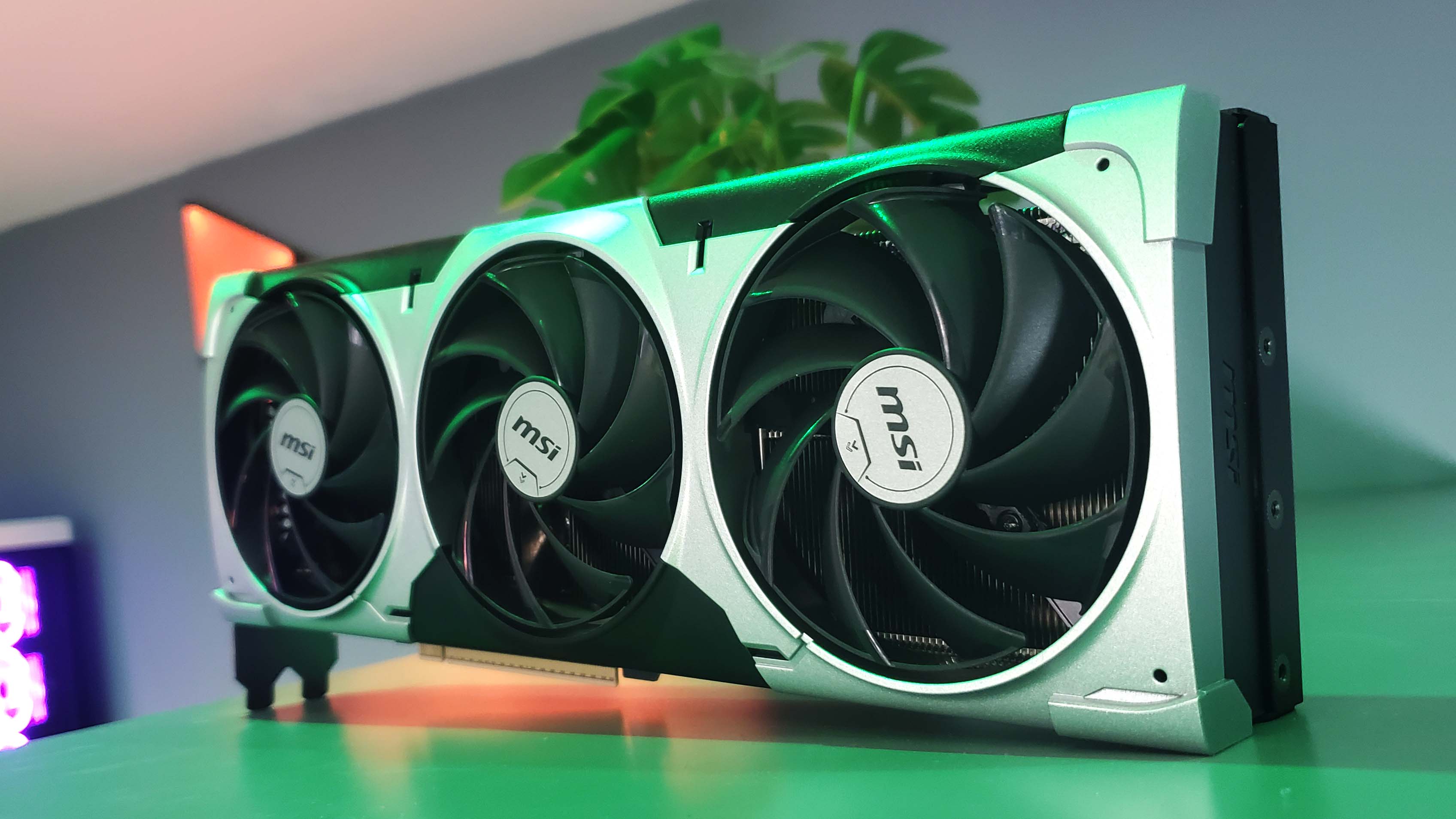
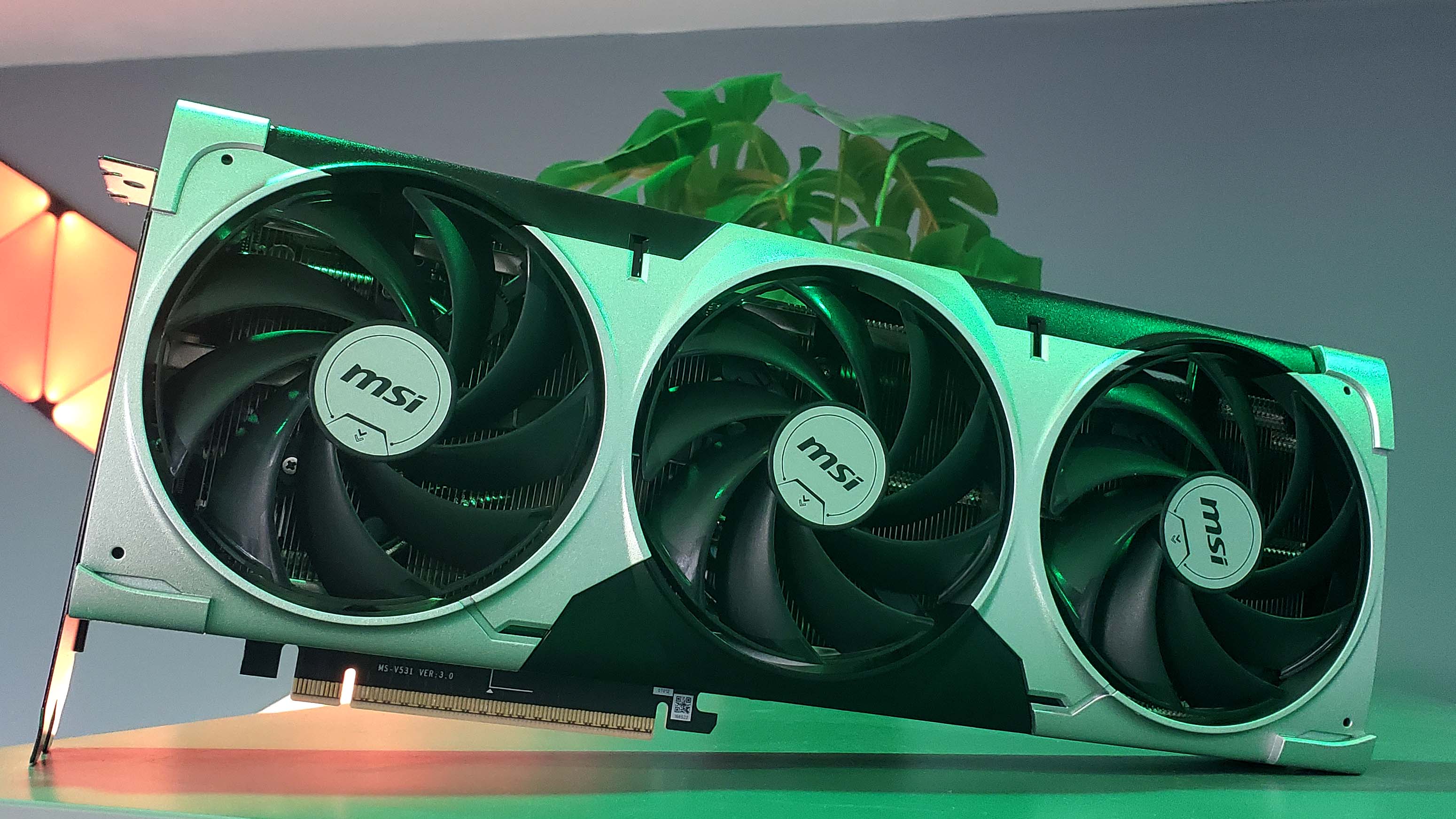
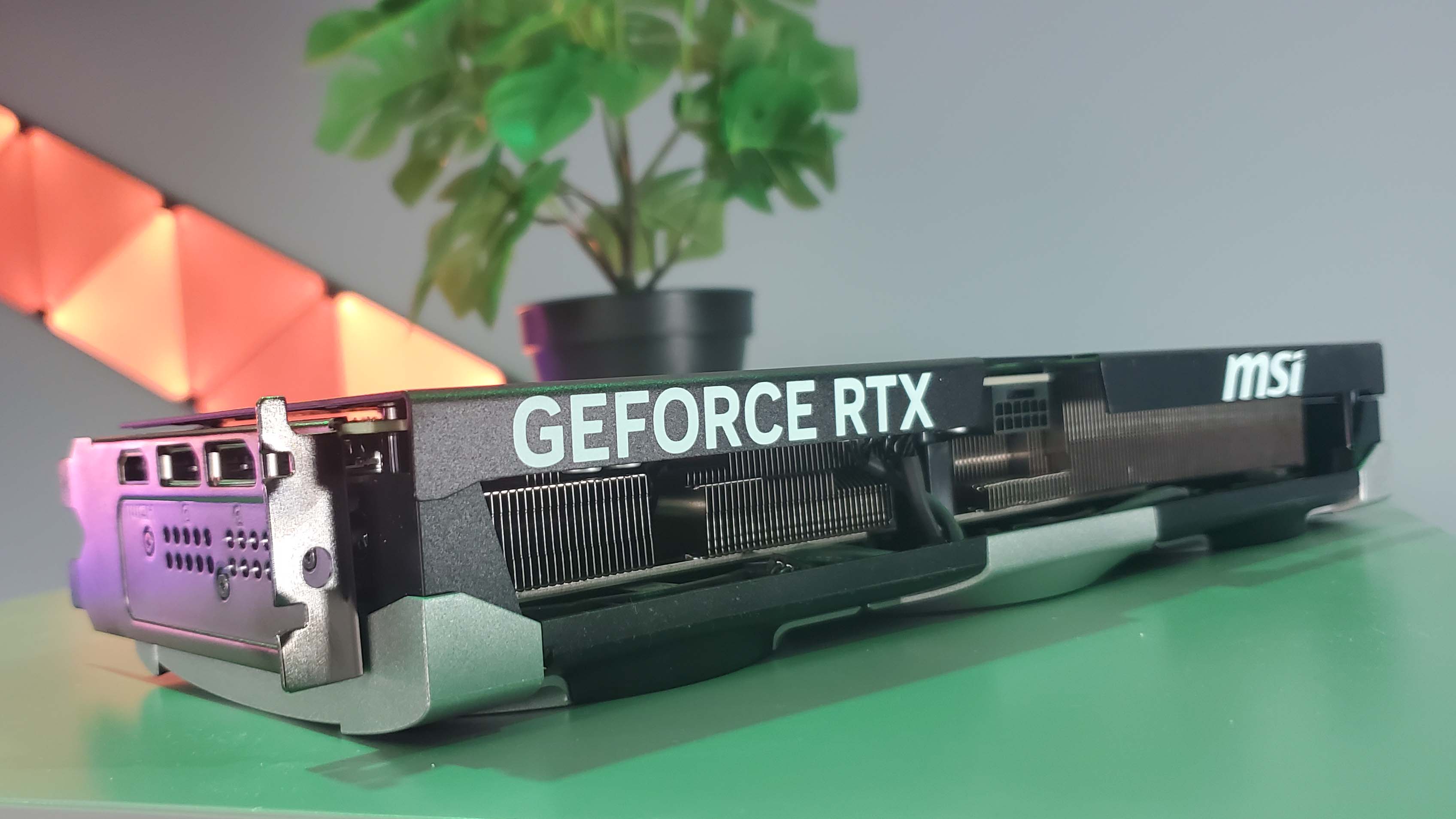
A potentially great graphics card that looks like it's going to suffer from being priced into oblivion.
The RTX 5070 Ti is a potentially great graphics card that looks like it's going to suffer from being priced into oblivion. The issue is that while the MSRP from Nvidia looks great, with a $750 price tag representing a $50 cut from the $799 of the RTX 4070 Ti/Super cards, it seems both manufacturers and retailers are aiming to cash in on the scarcity and demand of the new RTX 50-series GPUs.
The RTX 5090 and RTX 5080 vanished from stock within five minutes of launch, and though there may be higher volumes of the RTX 5070 Ti in the channel given the later release date, they're likely to disappear quickly, too. Especially as there are no other alternatives around. Both AMD and Nvidia wound up production of its last-gen graphics cards towards the end of last year, and retailers sold through their remaining stock in anticipation of new cards from the green and red side of the graphics divide.
This means GPU makers are eyeing up an opportunity to price gouge with impunity. They go in knowing that even if it might put the majority of gamers off with ludicrous pricing, there will be enough people willing to spend big just to get a new GPU that those few will take care of the limited stock available at launch.
Manufacturers then get the added bonus of pretending a huge price cut down closer to MSRP later on when the stock levels start to normalise. Win, win for them, a big ol' L for PC gamers.
The MSI RTX 5070 Ti Ventus 3X I have here for testing is theoretically an MSRP version, so sayeth Nvidia, but I would be surprised if you see it on sale in the US for $750. And I know for sure there are similar cards, with similar performance, that are going to go on sale for closer to $1,000, the original MSRP of the RTX 5080.
I would now expect most RTX 5070 Ti cards are going to be priced up far closer to the RTX 5080 than the set Nvidia MSRP for this GPU, at least over the next few weeks and months. And in that instance, the fact there's little in terms of performance between the two cards—one of the main reasons I've felt so positive about the RTX 5070 Ti—means less and less as the difference in pricing vanishes, too.
MSI's nominally MSRP RTX 5070 Ti Ventus 3X is a great example of Nvidia's new card. At its $750 price tag it would be the high-end RTX Blackwell I would recommend to gamers looking for a really tangible upgrade. With its overclocking performance it can nip at the toes of the more expensive RTX 5080, and comes with the impressive Multi Frame Gen feature which can push its gaming performance past everything from the last generation. I just have the fear over whether we'll see that MSRP in retail.

Dave has been gaming since the days of Zaxxon and Lady Bug on the Colecovision, and code books for the Commodore Vic 20 (Death Race 2000!). He built his first gaming PC at the tender age of 16, and finally finished bug-fixing the Cyrix-based system around a year later. When he dropped it out of the window. He first started writing for Official PlayStation Magazine and Xbox World many decades ago, then moved onto PC Format full-time, then PC Gamer, TechRadar, and T3 among others. Now he's back, writing about the nightmarish graphics card market, CPUs with more cores than sense, gaming laptops hotter than the sun, and SSDs more capacious than a Cybertruck.
